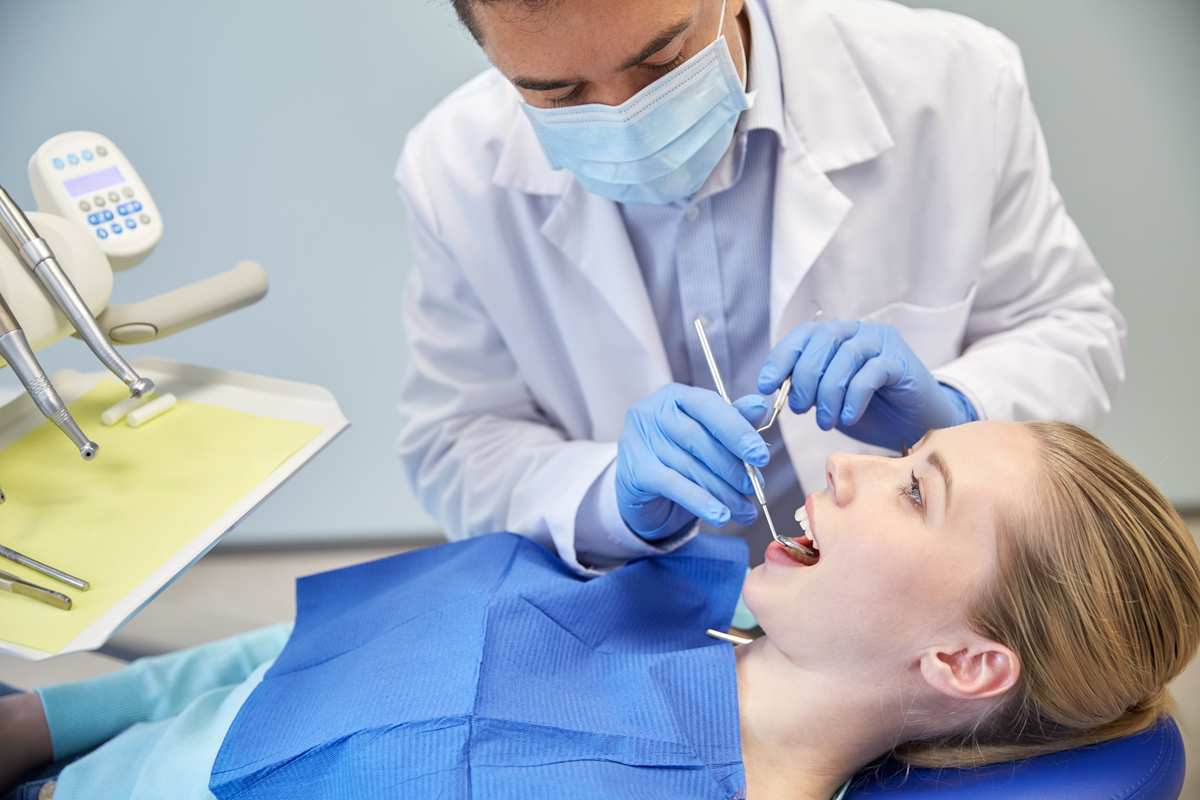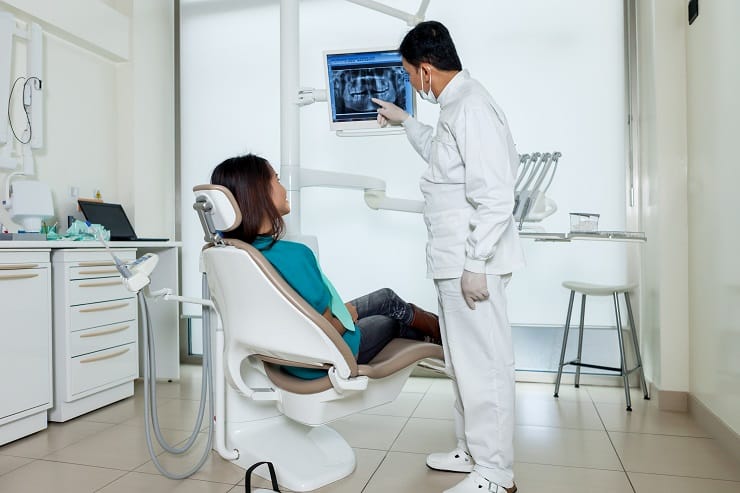For most people, teeth are used to chew food and flash smiles. From the first time they erupt from your baby gums during the first few months of your existence to the time you get permanent teeth, they become the main target of your oral hygiene.
In light of how sensitive teeth can get—a part of your body with its own blood supply and nerve connections—if it starts becoming painful, you might be faced with wisdom teeth issues.
All That You Need to Know About Wisdom Tooth Extraction
The human mouth only has room for 28 teeth on average. However, many people end up with 32 teeth. Some permanent teeth got to go due to the excessive dental crowding going on.
- What are Wisdom Teeth? The extra four teeth beyond the 28 teeth are known as wisdom teeth. They’re the dental equivalent of the vestigial tail or the appendix—a byproduct of ongoing human evolution that has lost their purpose over time.
- Old Relic of the Past: Humans needed more teeth back during our nomadic days, when we Homo sapiens had more in common with Neanderthals. The extra teeth allowed our ancestors to chew down or masticate rougher, tougher food.
- Replacement Teeth: The four extra chompers replaced any teeth we lost, making them semi-permanent teeth with an extra four tires, so to speak. They were also called wisdom teeth because they erupted during the “Age of Wisdom”, purportedly.
- Age of Wisdom: People don’t necessarily become wiser when they have wisdom teeth erupt from age 17 to age 21. However, they’re usually on the verge of adulthood there, so it makes sense to call these extra molars “wisdom” teeth or at least “adult” teeth.
- Lost Their Purpose: The wisdom teeth lost their purpose around the time dental hygiene improved to the point that adults could keep all their permanent teeth without needing a second four-set of permanent teeth to replace them.
- When They Become a Problem: Wisdom teeth can become a problem when they erupt around existing teeth awkwardly then produce gum pockets that your toothbrush couldn’t reach and could lead to bacterial spread and infection.
- They Might Need Careful Removal: If removing wisdom teeth were easy, they wouldn’t be specifically classified as a separate, more expensive procedure compared to normal dental removal. They tend to erupt or emerge at small spaces, thus requiring surgery and careful extraction.
Why Should Wisdom Teeth Get Taken Out?

There’s a bit of a tight squeeze going on when it comes to the average person’s mouth that can fit only 28 teeth but has to deal with 32 teeth or about 4 more teeth. This can lead to partially erupted teeth and a Petri dish of bacteria in gum pockets.
At the back of your mouth, the wisdom teeth serve as your third molar set: A spare four teeth. They’re typically spotted via dental x-ray.
Some people can get away from leaving them there if they don’t cause complications. However, most people have them removed before they get really problematic due to them being impacted.
Wisdom teeth might not erupt normally due to how far back in the mouth they are and how little space is left for them to emerge.
They can end up trapped in the gums or jawbone, which causes pressure and pain emanating from their nerve endings, your gums, and the nerve endings of neighboring teeth.
They can also emerge at awkward angles, thus pressing against nearby teeth and making them feel painful or cause pockets of your gums to remain unclean and bacteria-filled. If your mouth is too small and has no room for molars, their eruption can be extra painful.
You might even have issues reaching your wisdom teeth with your dental floss or toothbrush, which then results in them aching due to gum disease and cavities.
When Should You Get Wisdom Teeth Removed?
When your wisdom tooth erupts partially, it doesn’t necessarily require extraction. However, this is rare compared to most wisdom teeth that do cause some form of issue.
Only when it presents do you need to remove it, but more often than not, it does crowd other teeth and it’s difficult to keep clean after eating. Thus, here are the signs indicating that wisdom teeth removal is a must.
- Swelling and Gum Irritation: The symptoms of your gum swelling and getting irritated might indicate that there’s an emerging wisdom tooth or teeth. Even if the emergence isn’t painful, the wisdom teeth can erupt in a misaligned manner.
- Partial Eruption and Gum Gap: More often than not, issues come about when the teeth partially erupt from the gum and create small gum pockets that are hard to clean or floss. They typically result in bacterial spread and infection you need to safeguard by forcing to fit the floss there and by using mouthwash.
- Lack of Space: In most people’s mouths, there is no extra space for the extra teeth. Overcrowding makes teeth cleaning harder, making it easier for bacteria, plaque, and gingivitis to happen.
- Even If There’s No Pain: Pain is the number one indicator that your wisdom teeth are causing regular infections, gum irritation, and bacterial spread. However, consult with your dentist on whether an existing wisdom tooth won’t bring you problems in the future or not when left alone, even if it’s not causing you pain.
- Eruption Trauma: The building pressure from the erupting tooth can also damage your healthy teeth, nerve endings, and bones in your jaw and mouth. It’s why you should get rid of bothersome wisdom teeth ASAP.
- Don’t Wait: There are many who wait as long as possible if the wisdom tooth doesn’t cause them pain despite dentist warnings. The tooth should be extracted in case it could cause disease or complications in the future.
How are Wisdom Teeth Extracted?

Your dentist or the dental center (like Thantakit Dental Center in Thailand) will typically refer the patient to a maxillofacial or oral surgeon to get the wisdom teeth safely removed, which might include cutting through gum and bone.
- Different Methods: “Normal” teeth can get extracted care off being pulled by the dentist while you’re anesthetized. “Wisdom” teeth might require more than just pulling depending on how they’ve erupted or grown into your mouth.
- Sanitation Protocols: It’s critical that you search for trained pros who observe proper sanitation protocols. This will prevent infection. They should also put the proper anesthesia so the surgery itself won’t feel painful to you.
- Case-by-Case Basis: Wisdom teeth extraction should be handled on a case-by-case basis. Go with the recommendation of the dentist after doing the proper tests, like dental x-rays and whatnot.
- Impacted Wisdom Teeth: One of the most complex wisdom teeth issues is when a wisdom tooth is impacted. This means it’s trapped under the gums or inside your jaw, causing pressure on existing teeth and creating gum flaps with bacteria in them.
- Broken Through: Surgically cutting through gum is required for partially erupted or below-gum impacted wisdom teeth. If the extra teeth have broken through the gum surface, removing them might be much simpler and less expensive.
- Jawbone Removal: Bone removal might be called for when dealing with impacted wisdom teeth. The dentist cuts through the gum above the tooth then removes parts of the jawbone to access the tooth you normally can’t pull. The tooth is then taken out, usually by cutting it in parts.
- The Earlier The Better: It’s better to remove the wisdom tooth while it’s younger or hasn’t fully formed yet because its tooth root hasn’t completely formed or matured at that point. The surrounding bone is also softer and easier to cut.
What Should the Patient Do After Wisdom Teeth Removal?
Someone should drive you home after surgery is done. This will keep you comfortable while the anesthesia wears off. You might be given powerful anesthesia in light of how painful the procedure can get.
Get some sleep or a lot of rest after surgery. Avoid doing stressful things that could irritate your gums, from physical activity to eating tough food.
You should also use an ice pack over the affected area and keep your head elevated to ensure proper healing for the next two days.
Shift to a liquid diet and eat only soft foods for a few days to a week in order to keep the surgery area as clean as possible and to avoid dry socket. Avoid using straws or smoking cigarettes and weed for now too.
You’ll be further instructed by the dental center or surgeon’s office for extra post-operation instructions based on your medical history and individual requirements.
At any rate, rest assured that removing your wisdom tooth is one of the most common dental procedures in existence. It’s right up there with teeth fillings and normal tooth extraction.
What Adults Should Expect from Wisdom Teeth Removal
Once your dentist recommends removing your wisdom teeth and recommends an oral surgeon for you, you can get your insurance to partially cover it or get it cheaper through dental tourism in Thailand.
It takes a few days for you to heal after the surgery is done, thus allowing you to go back to normal and eat “regular” food (and not observe a liquid diet). Thankfully, you can depend on Thantakit’s affordable services to deal with partial eruptions and wayward wisdom teeth.
For the sake of dental upkeep, you need to regularly brush your teeth, floss, and visit the dentist regularly (at least every six months or twice a year).
Before Surgery
First, attend your appointment with your oral surgeon to discuss what the procedure involves. During this meeting, make sure to discuss any health issues you might have (heart disease, diabetes, and so forth) as well as list down any medications you’re taking.
Don’t be shy about asking any questions regarding the wisdom teeth removal. Talk about the anesthesia type you’ll get. You can numb down the area and remain awake or get put to sleep (sedated) during the procedure.
Plan the time off from your office or school to get the surgery done. Set up pet care, childcare, or a ride home by Uber if required. Have some sort of designated driver because you won’t be able to drive yourself back home while under anesthesia.
During Surgery
It takes about 45 minutes or sooner to undergo wisdom teeth surgery. Expect to get one of the following anesthesia types so you don’t feel pain while the wisdom tooth or teeth are removed from your mouth.
Local: An injection of local anesthesia numbs your mouth or the local area where the surgery will take place. The anesthetic could be novocaine, lidocaine, or mepivacaine, depending on what’s available at the dental center.
You might also take laughing gas or nitrous oxide to relax you or make you doze off during surgery. You’ll feel conscious again shortly after the surgery is over.
General: General anesthesia is breathing gas through a mask or getting drugs through the vein to get you to sleep the whole time. You won’t wake up until an hour or until the surgery is over.
IV Sedation: You might also undergo sedative dentistry that keeps you unconscious while the surgeon operates on you. This makes the time it takes the operation to happen seem like “nothing” or “no time at all” in your point of view.
Your mouth will still be numbed while you’re also given drugs intravenously on your arm to make you sleepy. The idea here is to sleep while you’re being worked upon.
Choose a proper anesthesia because the dentist will be cutting through bone, gums, and the wisdom teeth themselves to take them out. You’ll also have your incision stitched to ensure quick healing.
The stitch threads dissolve within days. You might also get gauze pads or cotton balls stuffed inside your mouth to soak the resulting blood.
After Surgery

Anesthetic response differs from patient to patient. Local anesthetic should allow you to drive home after doing the surgery as long as you feel alert afterwards. However, most err on the side of caution and just order an Uber or taxi home.
To quickly recover from surgery, just follow your dentist or oral surgeon’s instructions. Here are some other tips to follow during the first 3 days after wisdom teeth extraction.
- Drink a lot of water or fluids.
- If you have a sore jaw, use moist heat to relieve the pain.
- Exercise your jaw by gently opening and closing your mouth.
- Gently rinse your mouth with saltwater instead of gargling hard.
- If you have a fever or your pain doesn’t improve, consult your doctor.
- Ease your swelling or pain by administering dentist-prescribed drugs.
- Don’t use straws since they can loosen blood clots that help your oral recovery.
- Curb your swelling or changes in skin color by applying an ice pack to the face.
- Spare yourself dry socket by eating a diet of soft foods like soup, rice, and pasta.
- On the second day of recovery, brush your teeth gently but avoid brushing over any blood clots.
The Most Important Things to Know
Even though removing your wisdom teeth can be as infamously painful as removing your tooth root (also known as an endodontic or root canal procedure), it’s our hope that this article makes the whole ordeal more bearable when push comes to shove.
You can also avail of dental tourism in Thailand through Thantakit in case you lack dental insurance or can’t afford the out-of-pocket expenses of wisdom tooth surgery and extraction. Dental tours remain affordable even when including travel expenses.
Thantakit International Dental Center is Thailand’s longest established dental center. Situated in Bangkok, our clinic is renowned across the world as a destination for world-class dentistry, with most of our patients flying to us from Australia.
Please contact us today and get a FREE dental consultation.












